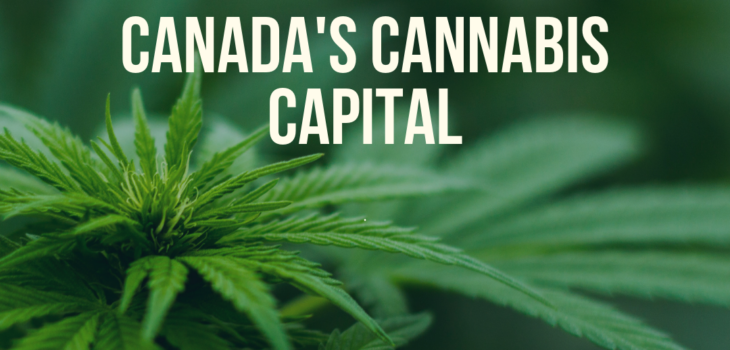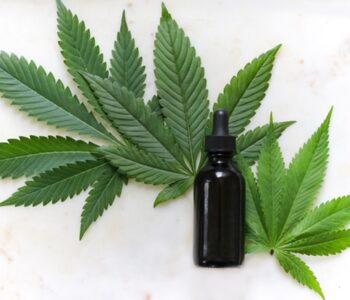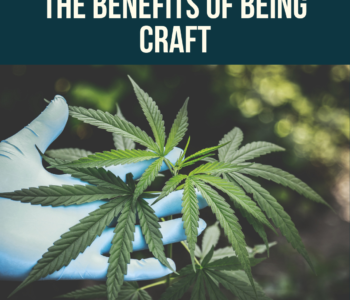 Education
Education
Why Alberta is Becoming Canada’s Cannabis Capital
It’s been barely six months since recreational marijuana was legalized in Canada. In this short time, Alberta has managed to get a few things right; even though the rollout of weed in the province has not been quintessential. So far, they boast of having the highest number of weed storefronts in the country. As of 4th May, 2019, the province had already issued 101 licenses to cannabis retailers. The number would have been even higher, but the Alberta Gaming and Liquor Commission (AGLC) halted the issuance of new licenses in November last year temporarily following a national supply dispute.
Boom then Bust
In the first two weeks after recreational marijuana legalization, Quebec and Ontario were leading the pack with the highest number of retail trade sales. While Quebec had sales of $9.4M, Ontario sales hit a high of $11.5M. Sales in Alberta at that time were a mere $5.7M. Fast forward to Feb 2019 and the tide had turned. Alberta recorded the highest weed retail sales at $ 12.3M, while Ontario and Quebec had $7.5M and $11.4M respectively.
The statistics up to this time revealed that Alberta accounted for 38% of the legal weed sales in Canada; this is despite having a small population size which is less than 12% of the country’s total population. Putting this into context, Ontario has three times the population of Alberta.
Projections by Arcview Market Research reveal that legal weed sales in Alberta will hit $800M by 2024; however, its national market share may drop as other provinces catch up.
A private model with no cap on retail licenses
After legalization of recreational weed, Alberta adopted a private model for cannabis distribution. What this means is that cannabis store fronts are operated by private retailers instead of being government run.
Five months prior to legalization, the province had received 533 retail applications for licences. By November 2018, they had issued 65 licences which were increased to 75 after the cannabis license moratorium ended in January of 2018. The ultimate plan is to have 250 privately run cannabis retail stores by the end of the first year. By then, other cannabis products such as edibles and topicals should have been legalized as well.
There is no cap on the number of licenses that can be issued to private cannabis retailers in Alberta. However, no single retailer can hold more than 15% of the total licenses issued.
Here are some statistics from Marijuana business daily.
| Province | Expected number of retailers in the first year of recreational sales |
| Alberta | 250 |
| Saskatchewan | 51 |
| Ontario | 40 |
| Newfoundland & Labrador | 24 |
| New Brunswick | 20 |
| Quebec | 20 |
| Nova Scotia | 12 |
| Prince Edward Island | 4 |
| BC | Not clear |
| Manitoba | Not clear |
By May 1st 2019, 21 private retail licenses had been issued in BC. Alberta on the other hand had issued 101 licences.
However, regulations for private retailers in Alberta are strict. For example, the cost of obtaining a private license is a non-refundable fee of $700 per year. Also, aspiring retailers need to undergo due diligence which involves: an interview, financial analysis, background checks, litigation, bankruptcy and other enquiries that the commission may deem necessary.
Adopting a private model has allowed Albertans to exercise liberalism on matters related to cannabis. This in turn has spurred growth in the cannabis sector.
Alberta’s economy was ready for cannabis
With the financial figures mentioned above, Alberta is definitely generating more per capita wealth from cannabis than any other province. But even before this happened, Alberta’s economy was poised for growth.
At the crack of 2018, hope was re-birthed in the province as oil prices began to peak. The price of a barrel was back up to $60 and people had hopes of finding jobs in the oil industry again. But as CBC news reports, this was a different kind of economic recovery.
CBC news quotes a report released by petroLMI in 2017:
“Jobs in petroleum exploration and production remain hard to come by, the report found, meaning no recovery for engineers, geoscientists, and those on the business and operations side of things.”
With the economic recovery and less jobs in the petroleum sector, Albertans were forced to look elsewhere. This happened to be about the same time that the cannabis act was being negotiated.
This might have provided the much-needed capital and labour to invest in cannabis businesses. The economic surge also positively impacted on Albertans purchasing power.
Existing network of medical marijuana patients
Prior to legalization, Alberta already had a large network of medical marijuana patients. This same network ensured that there would be a ready market for recreational cannabis, come October 17, 2018.
Here is what Tom Adams, managing director of industry intelligence at BDS Analytics, had to say as reported by CBC news.
“Before legalization Alberta already had a strong medical cannabis market, with 2.5 per cent of its population having prescriptions, well ahead of other provinces. There was a “mad embrace” of cannabis prescriptions among workers in the oil patch who are often drug-tested and can avoid losing their jobs by having medical cards.”
Canada has 201,000 registered MMJ patients, of this, 74,000 are Albertans. Apart from creating demand, this also created psychological preparedness for the acceptance of weed as part of the culture in Alberta.
According to data released in the first quarter of 2018, 17% of Albertans over 15 years have tried cannabis; this is while the national average is at 14%. In Alberta, the minimum age for cannabis consumption is 18 years, while the recommended national minimum age is 21 years.
Alberta has an excellent distribution system that has made it the most consumer-friendly market and with the highest legal cannabis sales in the country’s cannabis industry.
Way before legalization took effect; the residents of Alberta had made all the preparations to make cannabis a huge success.
More Doctors than Other Provinces
In 2018, Alberta spent more money per person on health as compared to other provinces in Canada. With the high level of spending on health, the ratio of doctors to the population has significantly grown as compared to other provinces.
According to a report published by CBC news in February 2018, the ratio of family physicians to population is increasing in Alberta faster that it is in any other province. The ratio increased by 20% between 2013 and 2017. Putting this into perspective, the national ratio increased by only 6.6% in the same period. This means that residents of Alberta have witnessed improved access to health care services in the last four years. This may also contribute to the high numbers of licensed medical marijuana patients in the province as compared to other provinces.
The same report indicated that Nova Scotia and Newfoundland and Labrador have the highest physician to population ratio. While the former has 257 physicians/100,000 people, the latter has 250 physicians/100,000 people. Alberta on the other hand has 237 physicians/100,000 people, as of 2017.
Although Alberta is not leading the pack, there are strong indications that this trend might continue.
“Looking at the current trends, we are sure that such kinds of growth rates will continue into the next few years,” said Geoff Ballinger, Physician Manager at CIHI as reported by CBC news.
Alberta is the second largest producer of cannabis in Canada
According to a report published by the Calgary Herald, Alberta is now the second largest producer of Cannabis in Canada, after Saskatchewan.
Health Canada is tasked with the responsibility of licensing cannabis producers in Canada. So far, AGLC has signed contracts with 24 Cannabis producers that are federally licensed.
Alberta also boasts of having some of the largest cannabis production facilities the world over. In a “top ten list” compiled in January, 2019 by Market Watch, three Alberta based cannabis companies were featured: Aurora Cannabis Inc., CannTrust Inc., and Aphria Inc. Other large producers based in Alberta include: Canopy growth (which had a very successful IPO in 2018) 7 Acres and ABCann.
With all these positive energy, Cannabis is slowly forming the backbone of Alberta’s economy. We expect to see more and more monies being pumped into the cannabis sector, considering that the right environment to attract investors has already been created.
What sets Alberta apart?
Alberta has one leverage factor, a cannabis supportive government. Even before the whole of Canada welcomed legalization on October 17th 2018, Alberta had already embraced cannabis and put measures in place to make sure that this was going to be a success.
The government made funding available for municipal cannabis transition programs ahead of legalization.
While BC was struggling to issue licences in the single digits, Alberta had 65 stores raring to go, with 250 stores being the target.
While other provinces set higher age limits for recreational cannabis, Alberta preferred to go with the lowest possible minimum age.
While other provinces embraced government run storefronts, Alberta did quite the opposite. They allowed the government to run online stores but gave store fronts to private entrepreneurs. This not only created employment for the populace but it also intertwined the culture of weed with the economy of Alberta.
Given, bigger provinces such as Ontario may catch up on retail sales volumes, given the small population in Alberta. However, it will take a lot more to oust Alberta as the cannabis capital in Canada, all factors taken into consideration.
Want more insightful articles about cannabis in Canada sent right to your inbox? Sign up for our newsletter!



